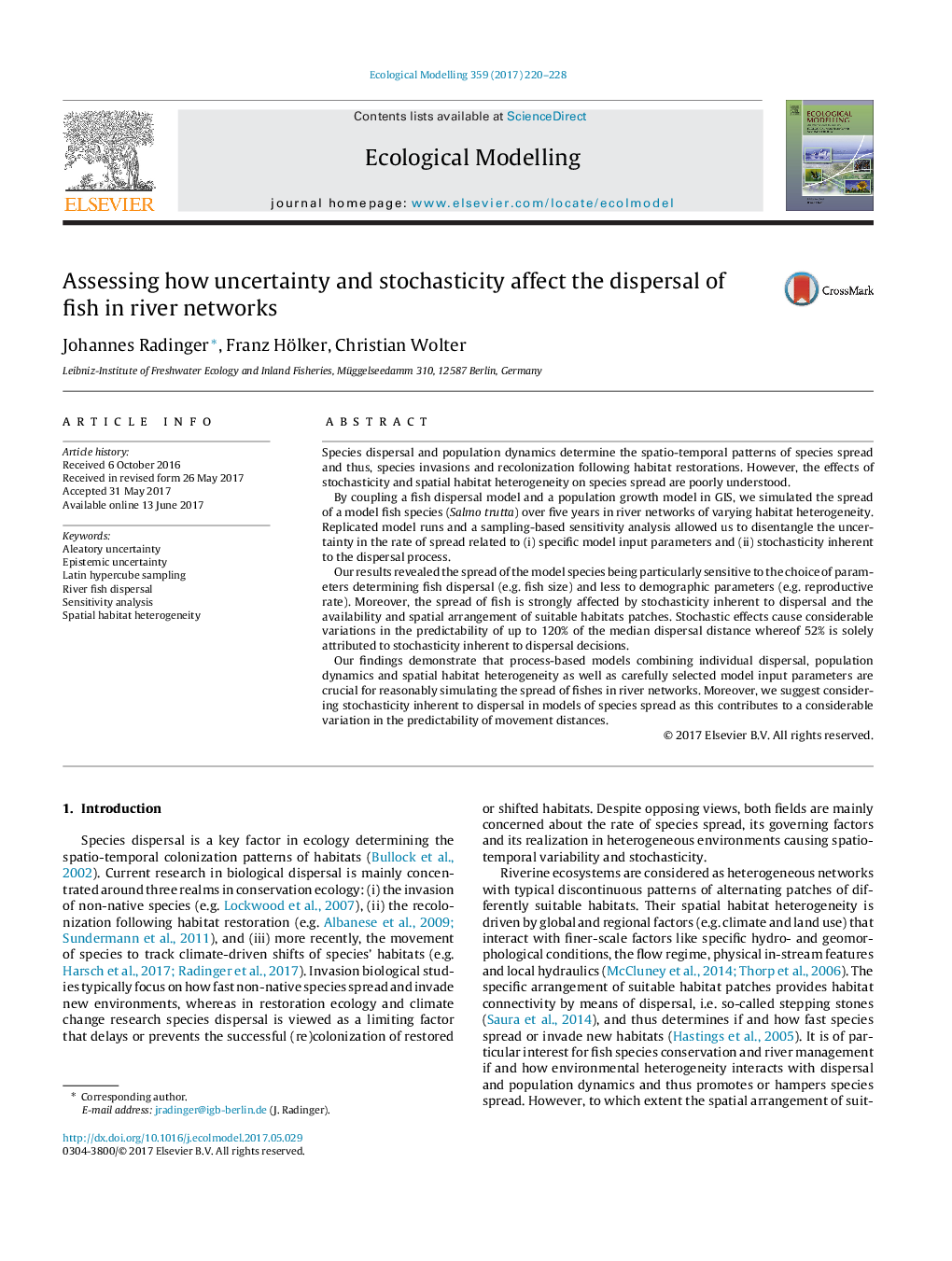| Article ID | Journal | Published Year | Pages | File Type |
|---|---|---|---|---|
| 5742133 | Ecological Modelling | 2017 | 9 Pages |
â¢We simulated the spread of fish in river networks of varying habitat heterogeneity.â¢We studied parameter uncertainties and stochasticity inherent to dispersal.â¢Fish spread was more sensitive to dispersal and less to demographic parameters.â¢Stochastic effects cause considerable unpredictability of the dispersal distance.
Species dispersal and population dynamics determine the spatio-temporal patterns of species spread and thus, species invasions and recolonization following habitat restorations. However, the effects of stochasticity and spatial habitat heterogeneity on species spread are poorly understood.By coupling a fish dispersal model and a population growth model in GIS, we simulated the spread of a model fish species (Salmo trutta) over five years in river networks of varying habitat heterogeneity. Replicated model runs and a sampling-based sensitivity analysis allowed us to disentangle the uncertainty in the rate of spread related to (i) specific model input parameters and (ii) stochasticity inherent to the dispersal process.Our results revealed the spread of the model species being particularly sensitive to the choice of parameters determining fish dispersal (e.g. fish size) and less to demographic parameters (e.g. reproductive rate). Moreover, the spread of fish is strongly affected by stochasticity inherent to dispersal and the availability and spatial arrangement of suitable habitats patches. Stochastic effects cause considerable variations in the predictability of up to 120% of the median dispersal distance whereof 52% is solely attributed to stochasticity inherent to dispersal decisions.Our findings demonstrate that process-based models combining individual dispersal, population dynamics and spatial habitat heterogeneity as well as carefully selected model input parameters are crucial for reasonably simulating the spread of fishes in river networks. Moreover, we suggest considering stochasticity inherent to dispersal in models of species spread as this contributes to a considerable variation in the predictability of movement distances.
